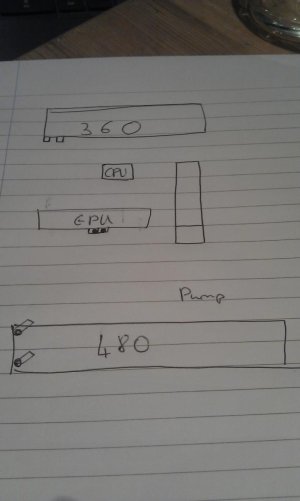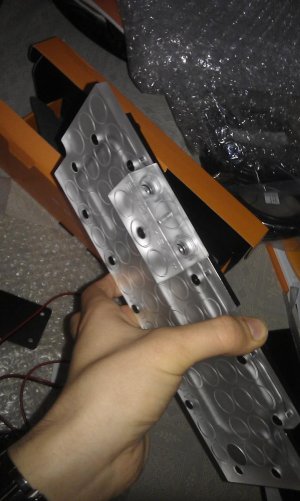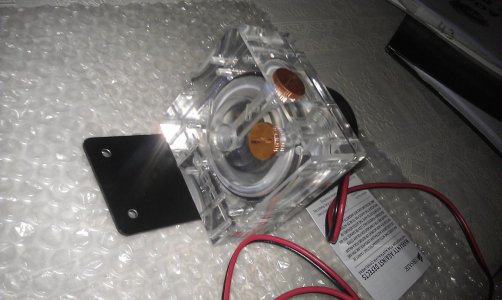alpenwasser
New member
Ahh, okay. Maybe the 12v or 5v cancels one out, so 12-5=7, or 5-12= -7? Like I said I don't know much, so I'll take your word on it lol.
Heh, yeah it definitely is that. I have no idea how it works either tbh though.
If I may ramble a bit...
The PSU in a computer is a Voltage Source (as opposed to a Current Source).
What that means is that you basically specify it to put out certain levels of
electrical potentials on certain wires. If you then apply a load to said wire
(meaning you connect the wire to ground with a resistor between), the PSU
will send enough current through that wire to keep the potential on the first
wire at the specified level (that's basically how voltage regulation works, in
very rough terms).
The power dissipated in that resistor (in this case, the fan(s)), is then equal
to (DC calculation, AC is trickier):
Code:
P=U*I (P: Power, U: potential drop aka voltage, I: current)
with U=R*I, I=U/R we get
P=U^2/R=R*I^2The term potential drop is actually very important, since voltage is
in actuality a drop from a higher electrical potential to a lower one (I'm taking
this terminology from German, my native tongue, if this is incorrect in English,
someone correct please).
Usually, the voltage for running a fan is 12 V (from the 12 V line to ground).
The power pulled by the fan is then
Code:
P=144 V^2/R, where R: Ohm resistance of fanHowever, there's no rule that says you have to connect the high voltage wire
(12 V in this case) directly to ground, you can also connect it to 5 V, as mentioned.
So, the power pulled by the fan then becomes
Code:
P=(12 V - 5 V)^2/R=49 V^2/Rwhich translates into lower rpm's.
The thing that matters to the fan is only the voltage drop between the two
wires it is connected to. If the higher wire is on 12 V and the lower one on 5V,
the fan will behave as if the higher were 7 V and the lower one ground. There's
no way for it to tell the difference between the two scenarios, it will only care
about the drop (so, you would get the same result with 21 V on the incoming
wire and 14 V on the outgoing one, for example).
I hope this is somewhat understandable, also feel free to point out any
mistakes or things that aren't clear; it's been a while since I've done some
proper electrical calculations :lol:











